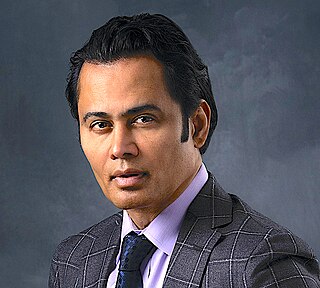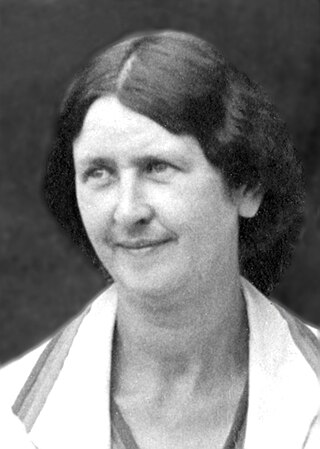Related Research Articles

A cerebral arteriovenous malformation is an abnormal connection between the arteries and veins in the brain—specifically, an arteriovenous malformation in the cerebrum.

An intracranial aneurysm, also known as a cerebral aneurysm, is a cerebrovascular disorder characterized by a localized dilation or ballooning of a blood vessel in the brain due to a weakness in the vessel wall. These aneurysms can occur in any part of the brain but are most commonly found in the arteries of the cerebral arterial circle. The risk of rupture varies with the size and location of the aneurysm, with those in the posterior circulation being more prone to rupture.

Cerebral edema is excess accumulation of fluid (edema) in the intracellular or extracellular spaces of the brain. This typically causes impaired nerve function, increased pressure within the skull, and can eventually lead to direct compression of brain tissue and blood vessels. Symptoms vary based on the location and extent of edema and generally include headaches, nausea, vomiting, seizures, drowsiness, visual disturbances, dizziness, and in severe cases, death.

Intracranial pressure (ICP) is the pressure exerted by fluids such as cerebrospinal fluid (CSF) inside the skull and on the brain tissue. ICP is measured in millimeters of mercury (mmHg) and at rest, is normally 7–15 mmHg for a supine adult. This equals to 9–20 cmH2O, which is a common scale used in lumbar punctures. The body has various mechanisms by which it keeps the ICP stable, with CSF pressures varying by about 1 mmHg in normal adults through shifts in production and absorption of CSF.

Subarachnoid hemorrhage (SAH) is bleeding into the subarachnoid space—the area between the arachnoid membrane and the pia mater surrounding the brain. Symptoms may include a severe headache of rapid onset, vomiting, decreased level of consciousness, fever, weakness, numbness, and sometimes seizures. Neck stiffness or neck pain are also relatively common. In about a quarter of people a small bleed with resolving symptoms occurs within a month of a larger bleed.
Cushing reflex is a physiological nervous system response to increased intracranial pressure (ICP) that results in Cushing's triad of increased blood pressure, irregular breathing, and bradycardia. It is usually seen in the terminal stages of acute head injury and may indicate imminent brain herniation. It can also be seen after the intravenous administration of epinephrine and similar drugs. It was first described in detail by American neurosurgeon Harvey Cushing in 1901.

Intracerebral hemorrhage (ICH), also known as hemorrhagic stroke, is a sudden bleeding into the tissues of the brain, into its ventricles, or into both. An ICH is a type of bleeding within the skull and one kind of stroke. Symptoms can vary dramatically depending on the severity, acuity, and location (anatomically) but can include headache, one-sided weakness, numbness, tingling, or paralysis, speech problems, vision or hearing problems, memory loss, attention problems, coordination problems, balance problems, dizziness or lightheadedness or vertigo, nausea/vomiting, seizures, decreased level of consciousness or total loss of consciousness, neck stiffness, and fever.
Cerebral perfusion pressure, or CPP, is the net pressure gradient causing cerebral blood flow to the brain. It must be maintained within narrow limits because too little pressure could cause brain tissue to become ischemic, and too much could raise intracranial pressure (ICP).

Decompressive craniectomy is a neurosurgical procedure in which part of the skull is removed to allow a swelling or herniating brain room to expand without being squeezed. It is performed on victims of traumatic brain injury, stroke, Chiari malformation, and other conditions associated with raised intracranial pressure. Use of this surgery is controversial.

An external ventricular drain (EVD), also known as a ventriculostomy or extraventricular drain, is a device used in neurosurgery to treat hydrocephalus and relieve elevated intracranial pressure when the normal flow of cerebrospinal fluid (CSF) inside the brain is obstructed. An EVD is a flexible plastic catheter placed by a neurosurgeon or neurointensivist and managed by intensive care unit (ICU) physicians and nurses. The purpose of external ventricular drainage is to divert fluid from the ventricles of the brain and allow for monitoring of intracranial pressure. An EVD must be placed in a center with full neurosurgical capabilities, because immediate neurosurgical intervention can be needed if a complication of EVD placement, such as bleeding, is encountered.
Neurosurgical anesthesiology, neuroanesthesiology, or neurological anesthesiology is a subspecialty of anesthesiology devoted to the total perioperative care of patients before, during, and after neurological surgeries, including surgeries of the central (CNS) and peripheral nervous systems (PNS). The field has undergone extensive development since the 1960s correlating with the ability to measure intracranial pressure (ICP), cerebral blood flow (CBF), and cerebral metabolic rate (CMR).
Neurohydrodynamics is a division of neurophysics that focuses on the hydrodynamics of the neurological system. It applies physical principles and design concepts to neurophysics seeking to close the gap between fluid mechanics and neurosurgical and neurological medicine. It combines fluid mechanics principles with neuroscience to improve neurological disorder healthcare diagnosis, monitoring and therapy.

Saleem Abdulrauf is an American physician specializing in neurosurgery in Washington, DC, who has helped develop high-flow brain bypass surgery, a less invasive procedure for treating intracranial aneurysm than methods used previously.
Stefan Kutzsche is a Norwegian paediatrician, neonatologist and anaesthesiologist. His research fields include neonatology and neuroscience, medical ethics, education, and the history of medicine, especially child healthcare.
John Douglas Pickard is a British professor emeritus of neurosurgery in the Department of Clinical Neurosciences of University of Cambridge. He is the honorary director of the National Institute for Health Research (NIHR) Healthcare Technology Cooperative (HTC) for brain injury. His research focuses on advancing the care of patients with acute brain injury, hydrocephalus and prolonged disorders of consciousness through functional brain imaging, studies of pathophysiology and new treatments; as well as focusing on health, economic and ethical aspects.

Carys Margaret Bannister was the second female neurosurgeon to be appointed in the United Kingdom. Born in Brazil to Welsh parents, she moved to England as a teenager and trained in surgery after qualifying as a doctor. She spent most of her career as a consultant neurosurgeon at North Manchester General Hospital and as a researcher at the University of Manchester Institute of Science and Technology. She specialised in treating disorders of the cerebral circulation, spina bifida, and hydrocephalus.
Joan Venes was a neurosurgeon. She helped to develop the practice of neurosurgery in children.
Alexander Coon is an American neurosurgeon who is the director of endovascular and cerebrovascular neurosurgery at the Carondelet Neurological Institute of St. Joseph's and St. Mary's Hospitals in Tucson, Arizona. He was previously the director of endovascular neurosurgery at the Johns Hopkins Hospital and an assistant professor of neurosurgery, neurology, and radiology at the Johns Hopkins Hospital. He is known for his work in cerebrovascular and endovascular neurosurgery and his research in neuroendovascular devices and clinical outcomes in the treatment of cerebral aneurysms, subarachnoid hemorrhage, and AVMs.

Born Serafima Semyonovna Sidorova, Serafima Bryusova was one of the world's first female neurosurgeons, and played a major role in the formation of Russian neurosurgery. She was both a medical doctor and Doctor of Philosophy, and spent much of her life doing research and making advances in the field of neurosurgery. Bryusova is one of the first four females that practiced neurosurgery around the world, and possibly the world’s first female neurosurgeon. Most likely due to the Cold War, Bryusova’s work is largely unknown and unappreciated.
Luca Paolo Eugenio Regli is a neurosurgeon and full professor and chairman of the Department of Neurosurgery of the University Hospital of Zürich since October 2012. He is the son of Franco Regli, a Swiss professor of neurology and founder of the Foundation Franco Regli for the Research in the Field of Neurodegenerative Diseases.
References
- ↑ Larsen, Øivind, ed. (1996). "Rise, Ingunn Ragnhild". Norges leger [Physicians of Norway] (in Norwegian). Vol. 4. Oslo: Norwegian Medical Association. p. 517. ISBN 8290921446.
- ↑ Doktorgrader ved Det medisinske fakultet august 1989–juni 2014, Michael
- ↑ Doktorgrader, Universitas, 1999
- ↑ Rise, Ingunn R. (1999). Cerebral blood flow during high intracranial pressure andblood loss. Institute for Surgical Research, National Hospital, Department of Neurosurgery, Ullevål Hospital, Department of Neurosurgery, National Hospital, University of Oslo. ISBN 8277221053.
- ↑ Offisielt fra statsråd 31. august 2001
- 1 2 "Landskampstatistikk. Totaloversikt for Kirkeby, Ingunn Rise" (in Norwegian). Norwegian Handball Federation. Archived from the original on 5 September 2012. Retrieved 21 December 2010.